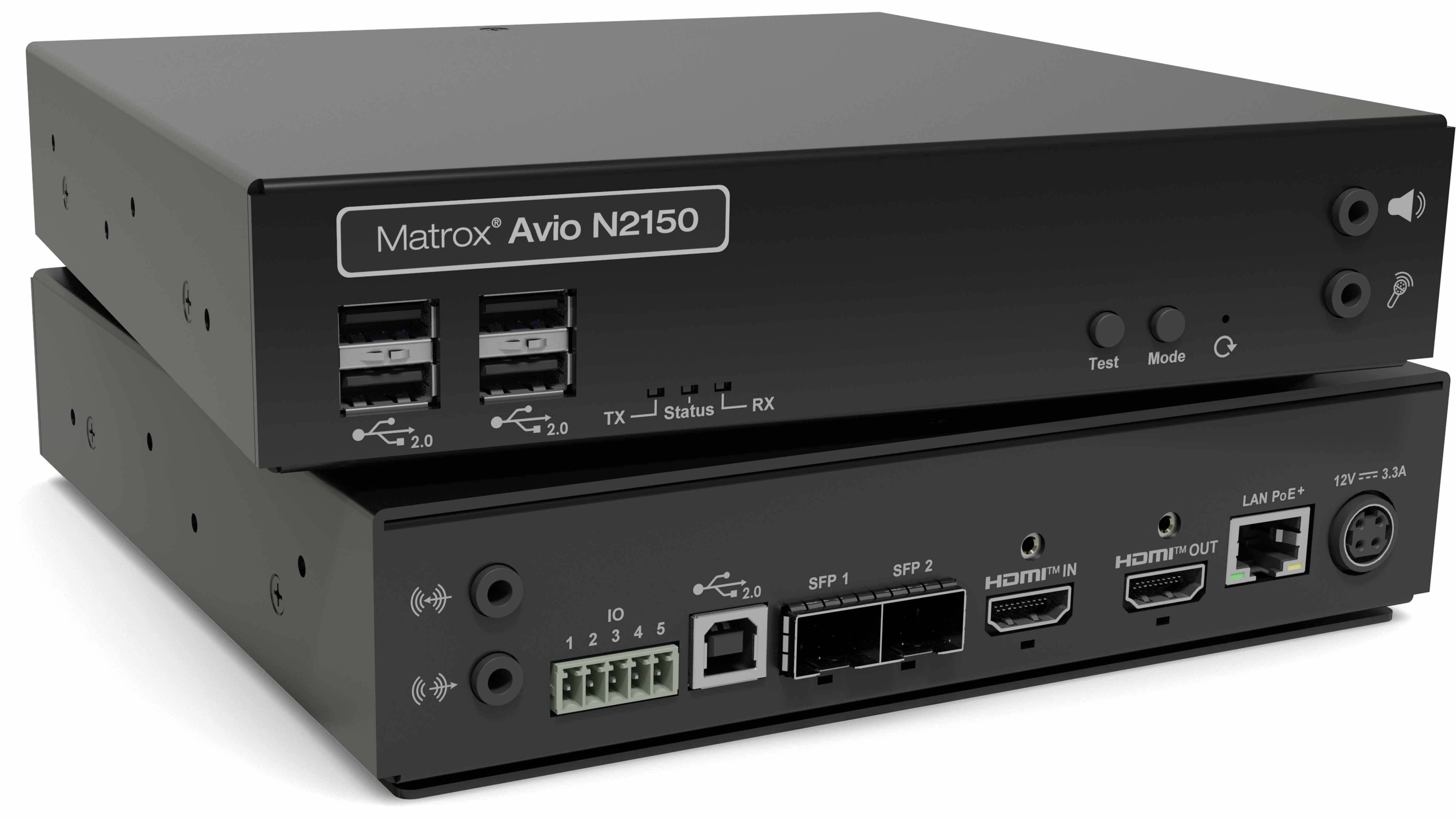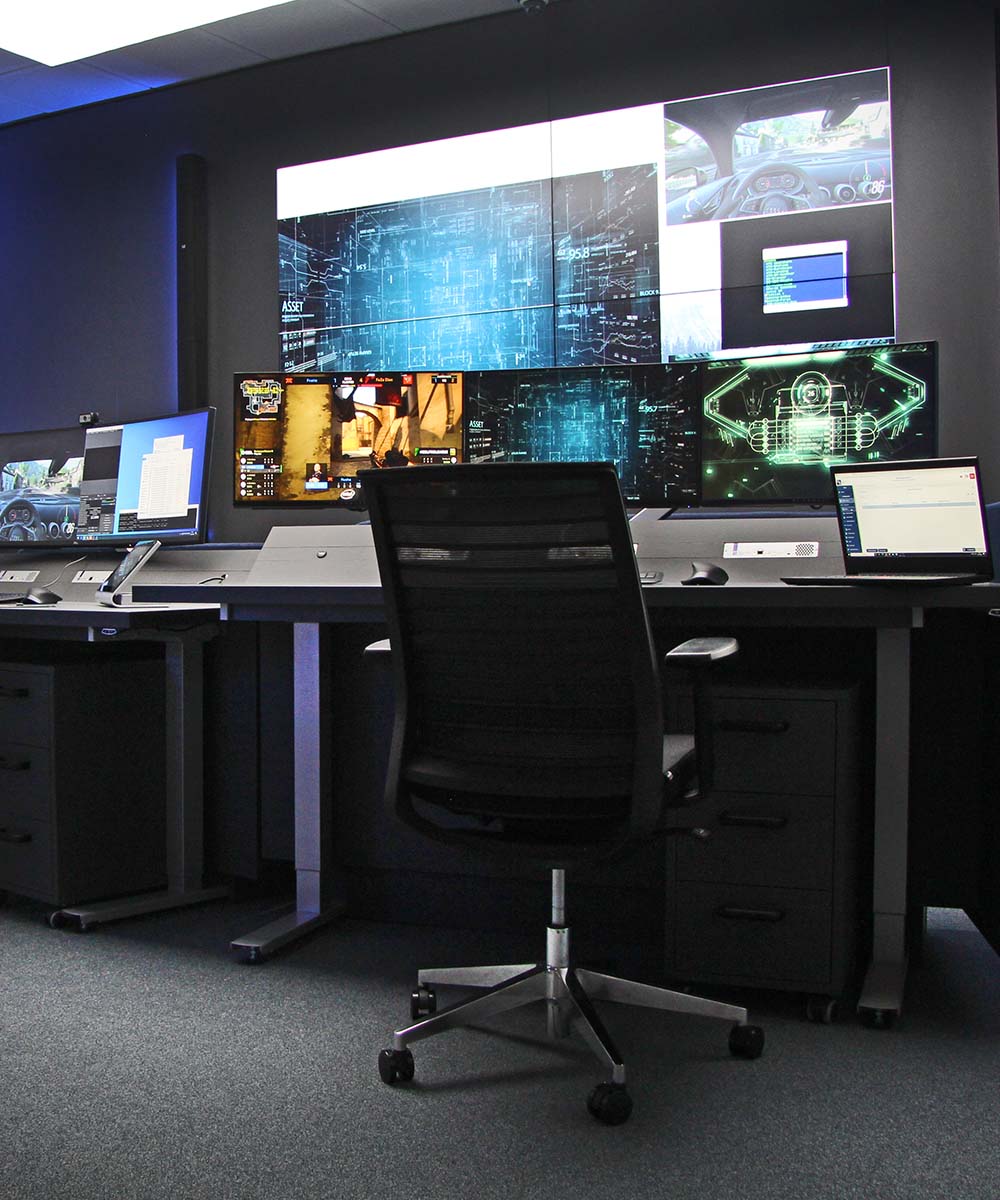KVM: The Need for Speed
The industry requires fast, reliable control—and manufacturers are responding with a variety of solutions.


The constant evolution of video resolutions and standards, combined with advancements in USB technology, continue to drive the development of KVM (keyboard, video, and mouse) control systems. When deployed properly, KVM systems should provide access to systems that reside in different rooms, facilities, and geographical locations.
“In order to satisfy the expectations of contemporary connectivity, this core competency propels continuous innovation in KVM systems, giving priority to the effective, high-speed transmission of ultra-high-resolution video and USB extension with low latency,” said David Isola, director of global product marketing at Black Box.
[MustangVision Struts Into ACC]
IP-based KVM/DMS (display management systems) are incorporating new developments in transmission and control technology. Dan Holland, marketing manager at IHSE, points to the JPEG XS standard, which combines ultra-fast transmission and extremely low latency (in the sub-millisecond range) for transport over SMPTE 2110 networks.

At Matrox Video, Caroline Injoyan, business development manager, highlights the IPMX set of proposed open standards designed to facilitate interoperability on AV-over-IP infrastructure with a single platform. Based on SMPTE ST 2110 and AMWA NMOS—standards that are commonly applied in broadcast—IPMX also includes specifications that address Pro AV deployments.
“[It’s] an open standard for AV-over-IP distribution, but it also applies to KVM technology,” Injoyan explained. “This is going to be a game changer because this means that if you can have a KVM system that’s based on an open standard, it will no longer be a closed system. It can more easily receive audio and video signals from other IPMX devices. It’s going to simplify both receiving a video stream as well as sending [signals] to other types of Pro AV products.”

Changing Demands
In broadcast and post, 4K (and, in some cases, 8K) adoption is driving features such as HDR and high bit rate resolutions. This is placing increased demand on KVM infrastructure and distribution systems, Holland noted. “Users are now demanding better picture quality and operational performance for latency-free operations,” he said.
A daily selection of the top stories for AV integrators, resellers and consultants. Sign up below.
With DMS, multiple monitors can be connected to a single workstation, which results in improved workflows. IHSE’s 4K/8K extenders let users either mirror their desktop to another monitor or stretch their desktop over two displays for better visibility. “With the expanded desktop, the increase in available workspace means users can work with multiple applications simultaneously without crowding the screen,” Holland added.

Not all facilities have the real estate for banks of monitors, each dedicated to a single source. Jochen Bauer, global director of sales and product management at Guntermann & Drunck (G&D), said that the introduction of picture-in-picture capabilities addresses this issue.
“You can have a huge workplace where you can operate all the screens with just one keyboard and mouse, making it more intuitive for the operator,” Bauer explained. “And with today’s picture-in-picture solutions, we can also help to declutter the desk by [having just] one screen, or a lower number of larger screens.”
Ergonomically, too many screens deployed in a wide configuration across a room can make it difficult for operators to view data on the far right and left of the monitor bank. “Picture-in-picture applications offer many great opportunities for modern control room and modern operations,” Bauer said.
Improving Environments

At its core, a successful esports competition is delay-free. “The biggest challenge for setting up a competitive esports tournament is simultaneously maintaining the player’s bandwidth and frame rates while reducing the amount of interactive latency from the player’s keyboard and mouse,” Holland explained. This is because even a 1ms delay could result in that player losing the competition. Generally, professional gamers play at 120fps (and sometimes 240fps), which Holland said requires "splitting the signals to feed the streaming channel without disturbing the frame rates on the players’ computers.”
Esports productions mandate the capture of action in real time in non-broadcast resolutions and frame rates. Engineers must achieve this without overburdening the players’ CPUs and graphics GPUs with added software processing. “Producers of esports must be able to switch between real-world, non-broadcast resolutions and frame rates without disturbing fast-action coverage that is streamed live to services like Twitch or YouTube,” Holland offered.
Like esports environments, command and control applications require KVM systems to enable real-time response and the support of multiple high-resolution displays. Isola noted that they must be fully scalable to accommodate future needs and incorporate redundancy and failover options for 24/7 reliability. Integrators also need to consider the human operators that will be interacting with this technology.

“The system should integrate easily with existing hardware, have user-friendly interfaces, and take ergonomics into account for operator efficiency and situational/environmental awareness,” Isola said. “Most importantly, command and control centers must be carefully designed with ergonomics in mind to reduce the number of incidents caused by human error.”
The command and control environment often features diverse systems sourced from a variety of different computer and server manufacturers, each providing their own specific displays and interfaces. In this scenario, operators are obligated to move between any number of standalone systems and keyboards. Holland argued that DMS that support extended display identification data (EDID) can make this more efficient.
Cybersecurity and Convergence

With the cybersecurity threat landscape growing more and more malicious, the systems AV professionals deploy need to be robust. “Systems integrators who design control rooms need to ensure the right products are used to support customer cybersecurity policies, including all subsystems and components, against the potential risk of attack and exploitation of vulnerabilities,” Holland warned.
At the same time, he argued for more open-source solutions that allow for improved capture, gathering, processing, and distribution of data. “As systems designers walk the line between accessibility and security," he added, "they have found KVM switching to be an effective means [of streamlining] data access while maintaining an important level of security and data quality.”
With a foundation in IT, KVM has evolved into a more AV-focused product category. “KVM originally came from the IT world, but over time grew very much into the AV world, as now our core transmission signals are AV-related signals—mainly the video that we are transmitting,” Bauer said. “Nowadays, we see it as an AV component or an AV system, but with that IT background.”
Design Considerations for KVM
Regardless of the application, AV designers and integrators must assess a number of different factors for a successful KVM systems implementation. According to Black Box’s David Isola, this includes bandwidth and cabling requirements, as well as monitor specifications and video resolutions. They also need to take into account any special connection requirements and the number of users and sources.
Of course, achieving ultra-low latency is paramount. “Latency delays can be disastrous, especially in broadcast game scenarios,” Isola said. “Furthermore, because it affects system performance and design, the physical distance between users and sources is an important factor.”
Network infrastructure considerations are also part of the equation. “For example, trying to run a KVM system or AV system that depends on 10G on a 1G network infrastructure may cause serious compatibility and performance problems,” Isola noted.
Carolyn Heinze has covered everything from AV/IT and business to cowboys and cowgirls ... and the horses they love. She was the Paris contributing editor for the pan-European site Running in Heels, providing news and views on fashion, culture, and the arts for her column, “France in Your Pants.” She has also contributed critiques of foreign cinema and French politics for the politico-literary site, The New Vulgate.
